One of the most iconic ways to enter or leave Lesotho is through the Sani Pass. The Sani Pass is a mountain pass suitable only for off-road vehicles that is a challenge for all those who love road routes and that connects South Africa with the Kingdom of Lesotho.
This mountain pass is already a claim by itself. Many people want to achieve the feat of crossing the mountain pass that reaches one of the highest points in the country at 2,873 meters of altitude. The road climbs 1,332 meters in just 9 kilometers with gradients of 1:3 and with quite a few very tight 180 degree curves.
It is one of the most spectacular 4×4 routes in both countries. And of course, if you can end the day with a good beer in the highest pub in Africa observing a landscape and wonderful views, who would refuse this proposal?
Next, we will explain more about this iconic place in the country, do you want to join us?
How to get there?
If you want to reach the Sani Pass from the east (Himeville or Underberg), you will have to take the paved road P318 for about 20 km towards the Sani Pass hotel to reach the foot of the border crossing. This is the direction if you are going from South Africa to the kingdom of Lesotho. You will find the South African border office, where you must stamp the exit to the passport (validity of 6 months minimum). Afterwards, you will drive for a few kilometers in no man’s land until you reach the top of the Sani Pass where, if you go with your vehicle, you will also have to present the car papers and pay 75R (about 4.50€), regardless of whether you travel with Carnet de Passage or not, as an entrance fee for the car.
If you go with the Carnet de Passage (if you don’t know what it is, click here), it will not be necessary to stamp the Carnet since both countries are part of the SACU (Southern African Customs Union). It is considered the same area of circulation, and therefore, with the South African stamp you can circulate with the Carnet de Passage in Lesotho.
If you have rented a car, you need a letter of authorization from your car rental company that allows you to drive the car in Lesotho. You can get one when you pick up the rental car. It costs around 650 R.
To leave Lesotho towards South Africa, you will need to head south-east from Mokhotlong on route A14 through the Monte Negro Pass (Kotisephola Pass) for approximately 60 km to reach the western end and summit of Sani Pass. Subsequently, you will have to stamp the exit of your passport at the border office and you can now go down the Sani Pass towards South Africa. Once you get downstairs, stamp your entry into the new country, at the South African office located at the entrance to the valley of the area also known as the Drakensberg (if you want to know more about the different excursions we explain in this area, click here).
When to visit?
To cross the Sani Pass, you have to take into account the weather that day. We changed the route for a few days because it had been raining for a whole week. On the day that a change in weather was predicted, with a more clear and sunny sky, we decided to spend the night at Sani Lodge Backpackers for the next day, do the mythical Sani Pass. We wanted to do it on a good day, to see the fantastic views that we had been told to see along the way.
During the summer months (November to March), it tends to rain every afternoon and driving conditions are more likely to be more difficult. During the winter (June-August) it is generally drier, making the track much less slippery. However, snowfall at the higher elevations can make the journey treacherous, as the snow melts and falls as water down the cliff formed by the valley’s mountains.
The most advisable months to do the Sani Pass would be April and May, since it is relatively dry and it is not too cold; or, from September to October, since the summer rains have not yet started.
However, you already know that time is relative and constantly changing. We did Sani Pass in April, theoretically one of the best months to do it and yet, the week before going up, it had been raining heavily every day all week.
What to do in Sani Pass?
The main activities that we recommend doing during your tour of this mythical area of Lesotho are:
– Drive the Sani Pass road from Underberg to Lesotho in a 4×4, just like the first explorer Godfrey Edmonds did
The Sani Pass was once a herdsman’s road where the inhabitants of the mountains of Lesotho drove mules and donkeys where they carried wool and moher fiber (long hair from the Angora goat) and exchanged it for blankets, clothing and cornmeal at the valley from South Africa.
In 1948, Godfrey Edmonds, a former RAF pilot, took about five and a half hours to traverse the Sani Pass. Although now it seems like a nonsense of time, at the time it was quite a feat. With his Land Rover, he traveled the track when it had not yet been enabled to pass an all-terrain vehicle. To achieve this, he was helped by workers armed with ropes and different blocks and material.
Later, in 1961, after all the success of this adventure, Edmonds founded the company Mokhotlong Mountain Transport Sani, so that adventurers who did not have a vehicle or desire to drive could reach the top. Even today, this company rents guided vehicles for those who want to enjoy the adventure without worrying about what gear to put in the car.
In 1955 David Alexander and his companions began building a road for their Land Rovers so they could create a trade route between Himeville in KwaZulu-Natal and Mokhotlong in Lesotho. Thus, the Mokhotlong Mountain Transport Company was created in 1961 and this mountain pass became more and more mythical. Five years later, the Mokhotlong Mountain Transport Company started running eight-tonne 4×4 cargo trucks up and down the ridge, which was not as user-friendly as it is today.
However, we encourage you to drive yourself this 9-kilometre mountain pass, so emblematic of the country, which runs between the two border points of the countries of South Africa and Lesotho.
You will first have to go through the South African border office to stamp your passport when you leave the country. Afterwards, the road begins to climb with a slight slope that deceives a bit and makes you trust that there are no such difficulties as that. But, finally, in the last section, the progressive unevenness ends in a series of curves of almost 180 degrees with a precipice on the side that is spectacular. You must watch out for the stones that are loose on the ground, which give the adventure a plus along with the ice in the shady areas. The last 6 curves with a steep slope, it will be necessary to play with the 4-wheel drive with first and second, or the gearbox in case the terrain is icy, muddy or rainy.
Therefore, take into account when you will go, since in winter there is often snow and rain, and the gravel terrain becomes muddy and slippery, adding extra difficulty to the route. Usually the worst conditions to do it is after a heavy rain as you will find streams on the road.
The Sani Pass passes between the border posts of South Africa and Lesotho. Both are open from 6 am to 6 pm. It takes about two hours to make the journey, stopping at different points to enjoy the views from various perspectives, and take some pictures.
– Drink a beer in the highest pub in Africa located inside the Sani Mountain Lodge and relax with some good views after a day full of adrenaline
Once you have passed the Sani Pass and after the management at the Lesotho border, one of the best ways to relax after so much adrenaline is to go to the Sani Mountain Lodge and enjoy a good meal and/or a good local beer in the highest pub in Africa, located at an altitude of 2,874m. If the day is nice, you can sit outside on the terrace and admire the fantastic views and the road that zig-zags towards South Africa. If it’s a little chilly, you can take shelter inside, next to the fireplace.
– Walking around the Sani Mountain Lodge
The scenery next to the Sani Mountain Lodge is impressive. If you feel like stretching your legs after so much driving, we advise you to walk along the edge of the cliff, taking care not to get too close to the tip so as not to fall. You will enjoy different perspectives of the Sani Pass road that you have previously done and the Drakensberg mountains, which separate the two countries: South Africa and Lesotho. Take a pair of binoculars, because if you’re lucky you may see an animal that inhabits the area: vultures, bearded vultures, elands, wildebeest…
– Explore the Maluti-Drakensberg mountains between South Africa and Lesotho
The mountain range that forms the natural border between the two countries is a perfect environment for hiking. We came from doing a week in another area of the Drakensberg (if you want to see the walking routes that we did click here) and we did not do any in this area, but we found travelers who recommended the Sani Pass and its surroundings if you like trekking. The four-hour hike to Hodgson’s Peak South through the Lesotho Plateau can be a good start if you want to explore the area. You will meet Basotho herdsmen with their herds and you will be rewarded with stunning views (if you want to know the history of the Basotho people, you can click here). The path is not that easy to find, so use the Walking in the Drakensberg guide (along with google or maps.me) or hire a guide from a nearby lodge.
Where to sleep in Sani Pass?
Near the Sani Pass mountain pass, you will find different accommodations that are located on the South African side, since from there they organize different day trips to cross this legendary port. We, below, will highlight some accommodations in South Africa, but also one in Lesotho that is run by a very nice local family:
– Sani Lodge Backpackers: The Sani Lodge Backpackers is a perfect option to spend the night before doing the Sani Pass. It is located between Underberg and the border crossing of the Kingdom of Lesotho. It offers rooms and camping, meals and common areas where a wide variety of people congregate. It also has a swimming pool and organizes a wide variety of activities in the area, including being able to take an excursion to the Sani Pass if you don’t have a vehicle or don’t feel like driving there. One of the best options in the area. For more information, you can click here.
– Sani Mountain Lodge: Sani Mountain Lodge is located just above Sani Pass, suspended between mountains. It’s a good place to stop for lunch, have a beer or even sleep. It has basic rooms (slightly more expensive) and a campsite. However, it has good views where you can relax and enjoy the landscape from above. Inside the lodge, you can enjoy a beer in the highest pub in Africa with a good wood fire. We stopped there for lunch: a hamburger and a vegetable pie accompanied by two Malutis, one of Lesotho’s beers (about 7/8 euros per person). For more information, you can click here.
– Riverside nº 10: If you only enter the country of Lesotho via the Sani Pass, you want to enjoy a totally local experience, we recommend this place. Me Nkune, the owner of the accommodation, will welcome you to her house where she has some small cabins where you can sleep (135R pp/night) and also a small garden where you can camp. We went with our car with a tent and camped in the garden next to the river. To camp there, we paid 60R per person (about €7 for two). It must be said that it is a completely local place, without luxuries and with a toilet and latrine. We loved it: we were able to walk around the village, talk to people and learn our first words in Sesotho and of course, meet for the first time the famous Basotho friendliness that would impress us throughout the country. You can find the location of this accommodation here.
Our route
After a week of hiking in the South African part of the Drakensberg, we were eager to set foot in one of the smallest countries on the African continent: Lesotho. That week felt like a rollercoaster. The first few days had spectacular weather, with sunny mornings and incredible views, but we had to change plans several times. For example, when we wanted to go to the upper part of the Tugela Falls and the amphitheater, we were warned about demonstrations due to the power cuts and the increase in electricity prices that caused road closures and riots for all those who passed by over there. And then, when we had already visited this area it started to rain for two days in a row and we had to stay at a campsite just below the Sani Pass, all the while watching the weather forecast to see when we could cross into Lesotho. It was clear to us that we couldn’t do the Sani Pass in the rain, not because we couldn’t do it with our vehicle, but because we would have missed one of the roads with the most spectacular panoramic views in southern Africa.
After relaxing at Sani Backpackers for two days in the pouring rain, we saw that the next day the weather was calling for a lull. So we would wait the next day to see if the forecast was fulfilled and to be able to decide if we would venture to visit Lesotho, which was making us want to.
That morning we woke up with the first intention of unzipping the roof tent and looking up at the sky. And, that day, the weather was with us. There were still remnants of some white ruffles, but the sun and the blue color of the sky predominated. In front of us, we could see for the first time the mountains of this part of the Drakensberg, a mountain range that forms the natural border between South Africa and Lesotho.
After we had done all the cleaning of the dishes, wiped the outside of the tent with several cloths so that when we closed it it wouldn’t be wet and paid for the accommodation, we got into our Toyota and in the mud of the area where we were camping we went out to do one of the routes that many call the most impressive road in southern Africa: the mountain pass known as the Sani Pass.
Today we had a spectacular day, and during the first kilometers we could already see the mountains in front of us. The road was completely paved and we did not cross any vehicles. It won’t be that the port will be closed due to the rains these days, we wondered. But after a while we arrived at the border of South Africa, where we had to do all the bureaucratic passport issues. There, outside, were a couple of policemen sitting, waiting for the first travelers. That border was one of the quietest we had seen during our trip to Africa. There were no people who wanted to help you in exchange for a small commission, other vehicles, crowds of people up and down…it was a border located right at the bottom of the mountain, with a couple of huts where they were supposed to where the Immigration officers live, and a small building so that they can stamp your passport. The police entered the building, searched us, asked us what car we were driving (it seems that many times, it depends on the vehicle, they don’t let you pass through this mountain pass), they sealed the South exit -Africa and they told us that we could now advance with the next 9 kilometers of an approximate 1,300 meter difference until we reach Lesotho, the country located just above the mountains and where we would find the border to do all the entry procedures to this new African country.
From this point on, the road stopped being paved and was all dirt and cobbled. While climbing with the v ehicle the first slopes, we were looking with the rearview mirror because with the height you had increasingly fascinating views over South Africa. We had done very well to wait a few days down to do the Sani Pass on a sunny day with clear skies.
The first kilometers of this no man’s land we drove with the 4×4 activated. We were not experts in driving this type of vehicle and terrain, but it was noticeable that we had already been traveling in Africa for more than 8 months and that with experience we had learned to handle this vehicle that had accompanied us to so many places and so many routes of the continent. Today it was his turn to face a new challenge, the Sani Pass, a path of shepherds that they extended by road less than 70 years ago.
The rain of the previous days was noticeable with water running along the sides of the road, and small waterfalls forming around it. We were moving forward in the solitude of this road, making various turns and following the mountain when, suddenly, we saw a shining metal and above it a zig-zag road that was the final part of the Sani Pass, the steepest of all. That metal was a descending vehicle. A small truck that should go to work in South Africa. We stopped to take some photographs of the views behind us and just as we made a bit of a trail we saw a shepherd who was warm with his blankets who had just woken up after sleeping on the ground that night night.
We left behind the asphalt for the earth, the valley for the mountains, and entered a land of shepherds, where we would discover the Basotho culture and the importance of blankets, not only for shelter from the freezing temperatures but also as sign of identity That pastor had spent the night in no man’s land, with the luggage of a plastic bag, some blankets that he wore wrapped around his body and a mountain pass that covered his entire face.
Now, yes, it was time to face the final part of the Sani Pass through the last zig-zags. With 4×4, the car was already difficult to climb. So we stopped the vehicle, and activated the reduction gear, and with tense calmness we began to climb the last turns of the Sani Pass. In the most opaque areas, there were remnants of ice since we were at more than 2,000 meters of altitude, so it was important to pass through the areas where the sun had touched the most so as not to have any scares.
These 180 degree turns were impressive. It was an incredible climb and the scenery was spectacular. We were almost at the top of the mountain. Our Toyota made a last effort, like that hiker who has a few meters left to complete the summit and who gasps looking towards the cross of the peak. Our Toyota had completed one of the most legendary roads in southern Africa, and proof of this was the sign we found just after taking the last bend that said: Sani Pass, 2,873 meters.
There, there were four little houses. One was a small kiosk where you could buy some canned food and the SIM card, another was a bar that still served alcohol to various shepherds who were taking refuge from the cold, another looked like the house where the immigration agents of the border and the last one was the office where you had to do the procedure. More than an office, it was a ticket office where 3 Lesotho police officers were waiting for us, one of them drinking beer at 10 o’clock the next morning and with a smile from ear to ear to welcome the first tourists. The border of this new country that awaited us was very calm. They gave us a map of the country, stamped our passports (another stamp as a souvenir of this gap year in Africa), paid the entrance fee for the vehicle and taught us the first Sesotho words we wanted to learn in order to to try to speak the local language. Lesotho was one of the few African countries where only one local group (the Basotho) predominated and therefore everyone spoke the same language.
Once we entered Lesotho, we turned down a road to the right and left the car in a meadow to walk on the top of the mountain from where the road we had traveled could be seen from the heights and the whole of the South African part at our feet. The landscape was incredible, on a very beautiful day but also on a cold day, and the fact is that we were at more than 2,800 meters of altitude and this was noticeable. We crossed different pools of water, and followed the ridge of the mountains taking different photographs of this beautiful landscape.
Afterwards, we returned to the side of the border where there was a house that was in much better condition, built of stone and that said: “The highest pub in Africa”. Here is the bar with the highest altitude in Africa, at 2,874 meters above sea level. In fact, many tourists only go to Lesotho to spend the day, to take a photo in this place, have something to eat and return via the same place of Sani Pass. We, however, thought that this was not discovering the country, since you cannot say that you have been to a country if you have only been there for a few days.
We entered the bar, and it was really well prepared to receive all the tourists. It had a fireplace, a wooden floor, all with photographs hanging on the walls and it was a restaurant. We went outside to enjoy the views while we had a beer, and then went by the fireplace to shelter from the cold as we watched new tourists start to arrive. Some went with a guide who had driven the vehicle through the Sani Pass, others arrived with their vehicle but went down again the same day. In any case, Lesotho was much more than the Sani Pass and we were waiting for almost two weeks touring one of the most unknown countries in Africa and which we liked the most.
Now yes, after having completed the Sani Pass, one of the emblematic roads in Africa (although for us there are many more lesser known ones such as the road that goes to Ellis Lake in Mount Kenya -if you want to know more, click here-, or some roads near Lake Mutanda in Uganda), we had to go into an unknown country about which we had very little information.
We advanced along the road, already asphalted, crossing different mountain passes and crossing paths with shepherds who had their entire faces covered with mountain passes. It’s not that they were criminals or bank robbers, but it was the way to protect themselves from the dry cold that blew in those lands. These shepherds went with their herd along the road itself, some advancing on foot and others advancing on a horse, one of the most important animals in Basotho culture, as we would discover days later with the experience we had with the Ntlhoki family (if you want to know more, you can click here).
The day was fading and it was time to find a place. We were in the region known as the Highlands, and after several mountain passes through Lesotho that were at a higher altitude (but with a very well paved route), we found a small sunny village on our right, next to a creek Right next to the road, there was a sign indicating that it was a lodge, but there was no vehicle to be seen and only three circular houses made of stone.
We got off and a family came out who we asked if we could camp with our car in front of the houses. They told us yes, no problem, but if we wanted to sleep in the cabins we could do that too. They showed us the room, but we, most of the time, liked to sleep in the tent more than on another mattress.
We took the opportunity to go for a walk around the town on the other side of the river, crossing a small bridge. There, we were able to talk to some children and some families who were returning from school and from working on the land. Many were warm with blankets, and some were ahead of us with their horses. The surroundings were rural, and very beautiful, but it was getting colder and colder because the sun’s rays were hidden behind the mountains.
We returned to the accommodation and there, Me Nkune was waiting for us with several blankets. He warned us that at night in that area it was cold, and that we needed blankets. We had a good sack, but still, we paid attention to him and took them. Just in case we had to use them…
After dinner, the cold intensified more and more. We quickly climbed into the tent to get under the sack and placed the blankets Me Nkune had given us. It was really cold and we can assure you that it was one of the coldest nights we spent on the African continent. For those who say that it is not cold in Africa, we advise you to come to Lesotho.
We had spent a great day traveling through some very beautiful landscapes and doing the Sani Pass. And now, we were in the Highlands, high in the mountains of Lesotho, next to a small rural village, with shepherds walking in blankets and mountain passes, and it was very cold. The next day we found the car frozen, with stalactites in the tent and happy to wake up to go immediately to find the sun, to warm our bodies. Some shepherds who had slept on the floor were at Me Nkune’s house taking refuge next to the small fire that was smoking throughout the room. We were starting to discover Lesotho…


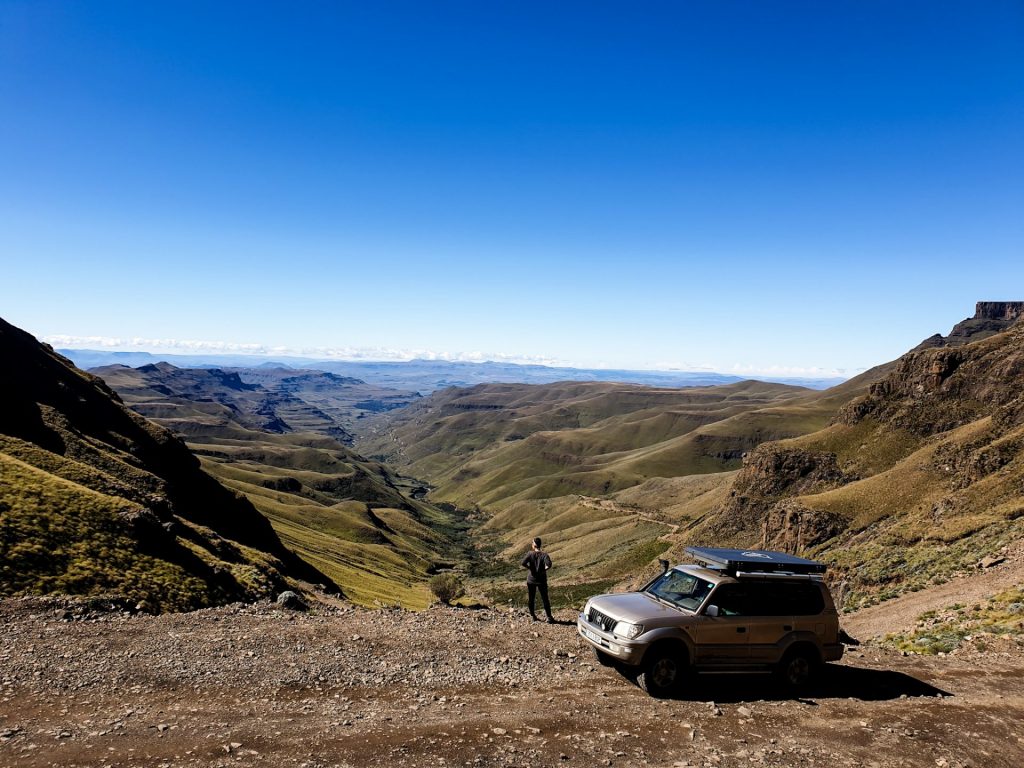
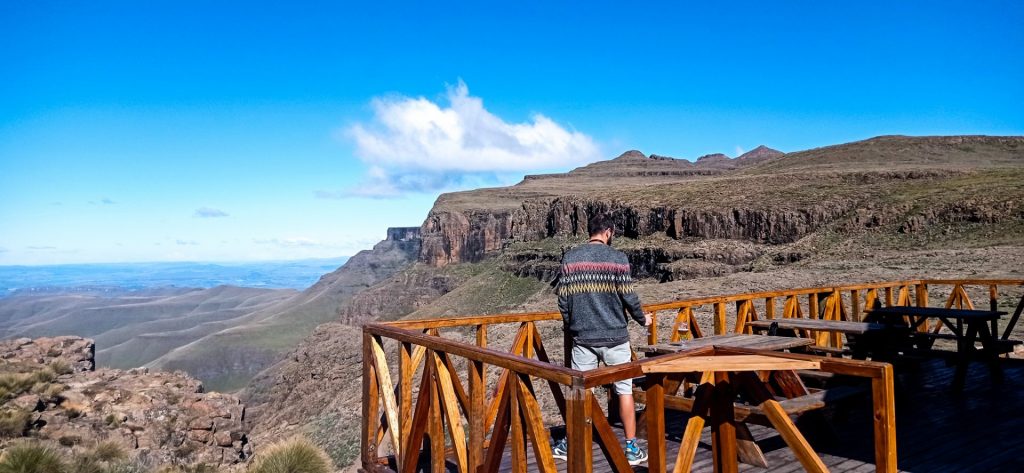
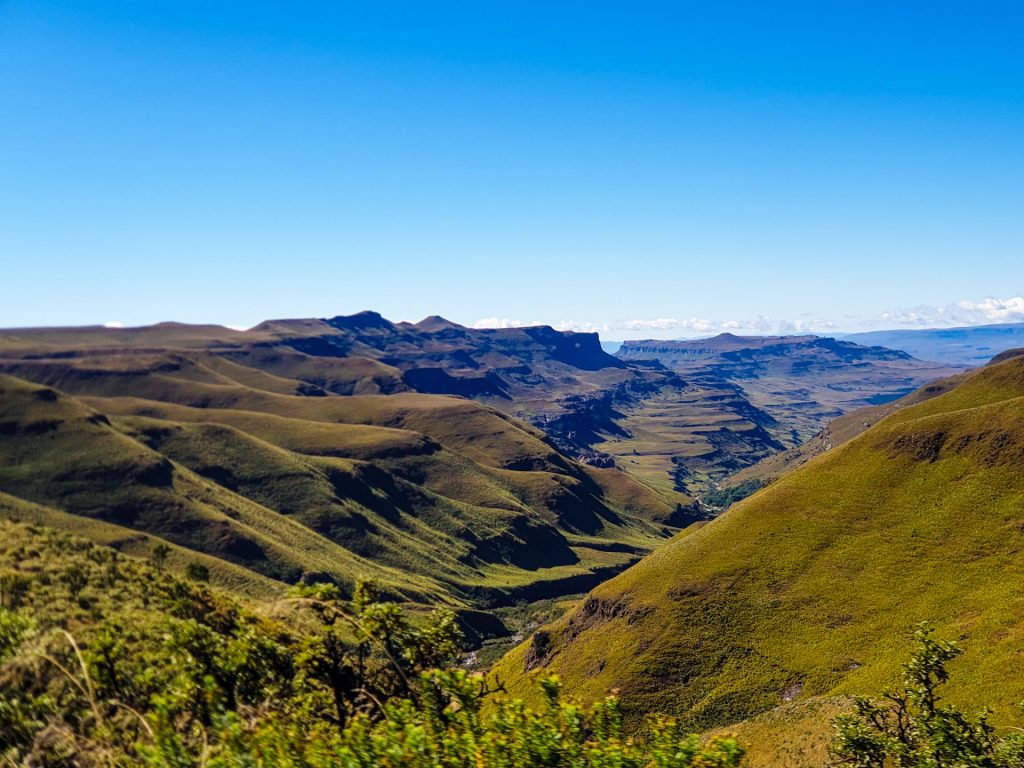




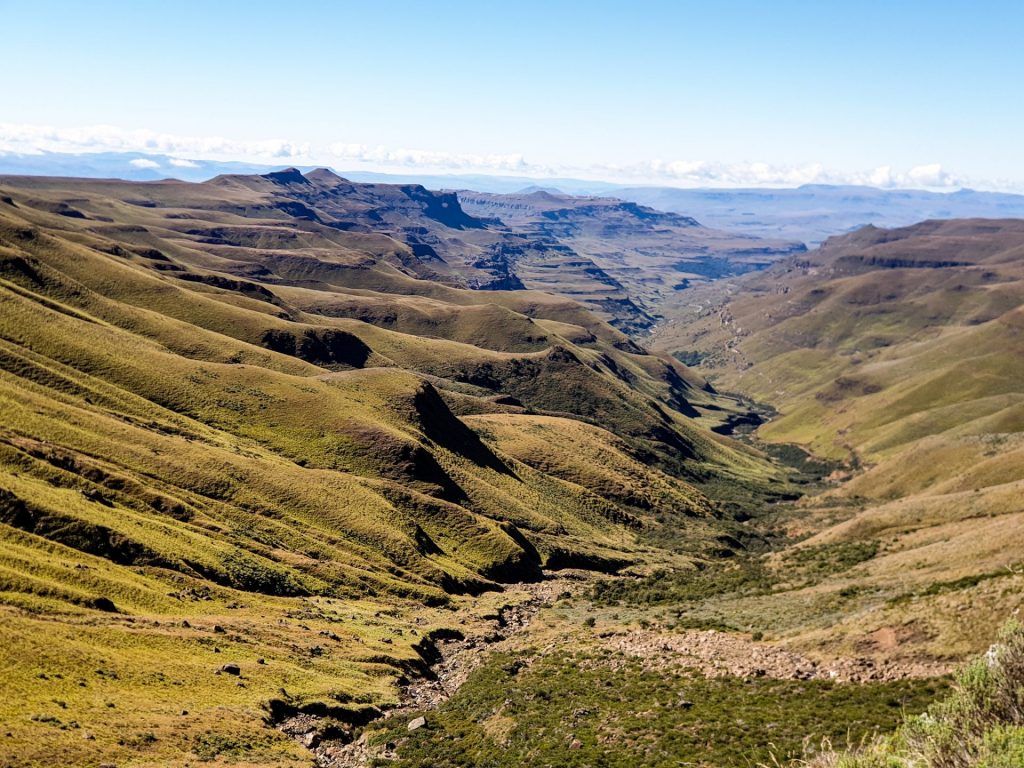
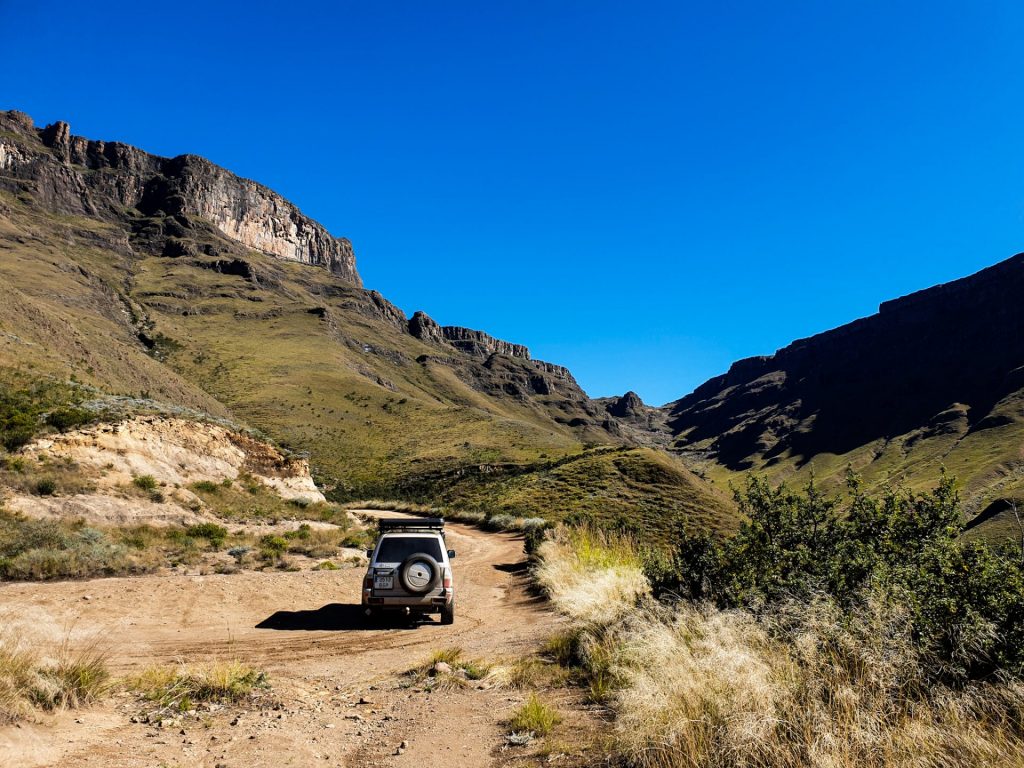

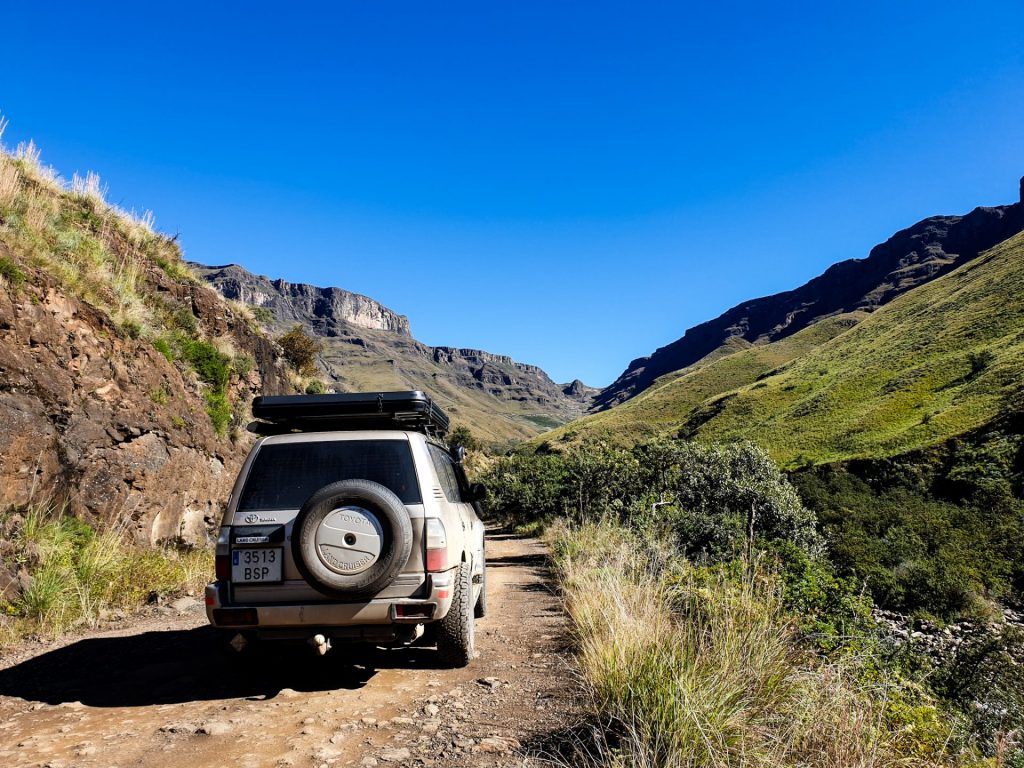
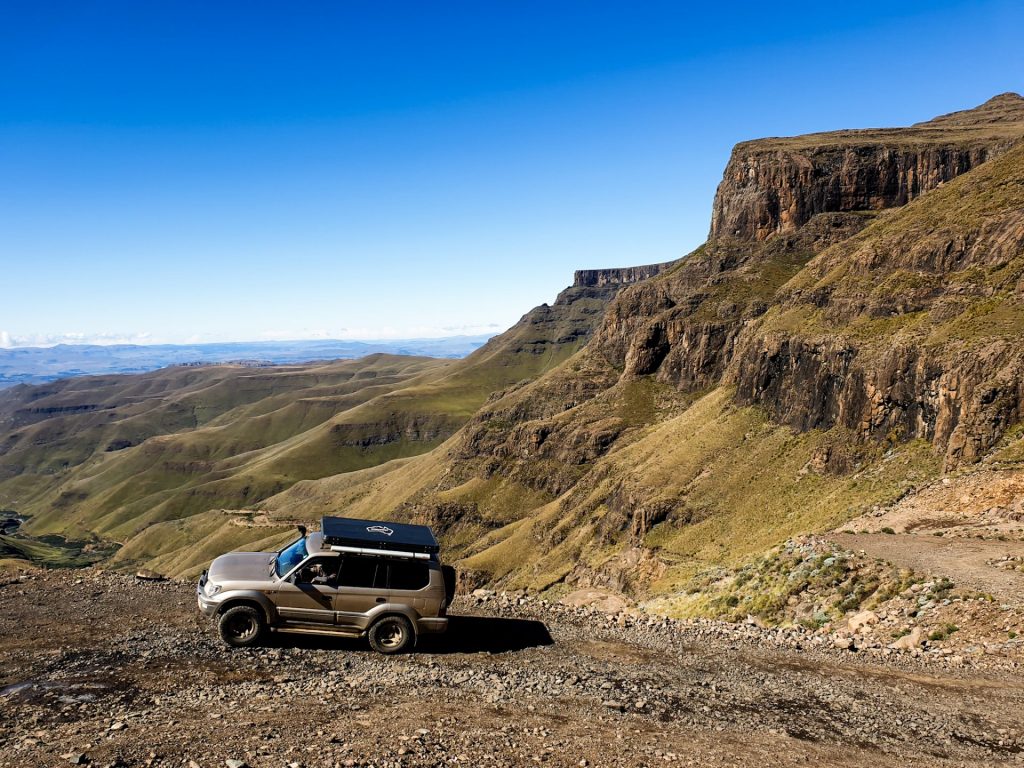
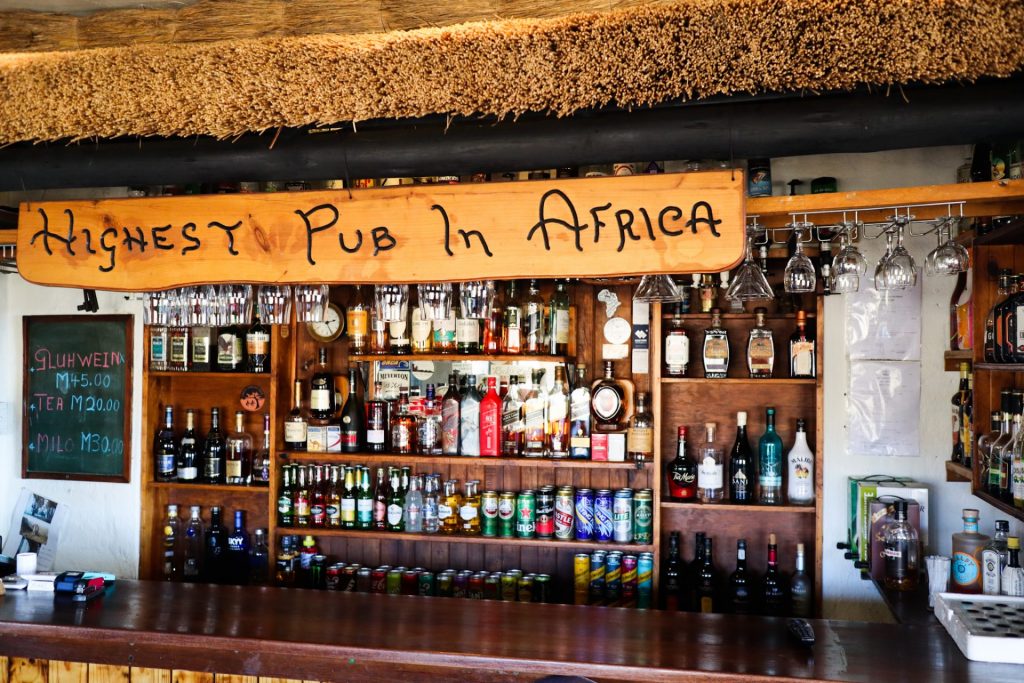

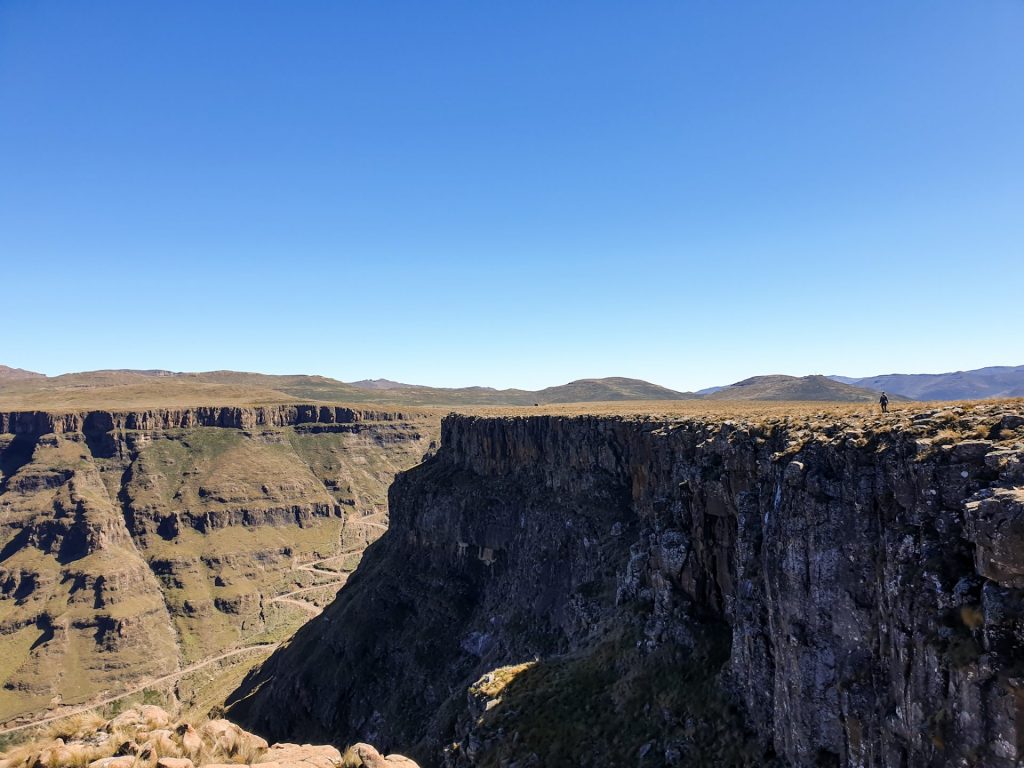

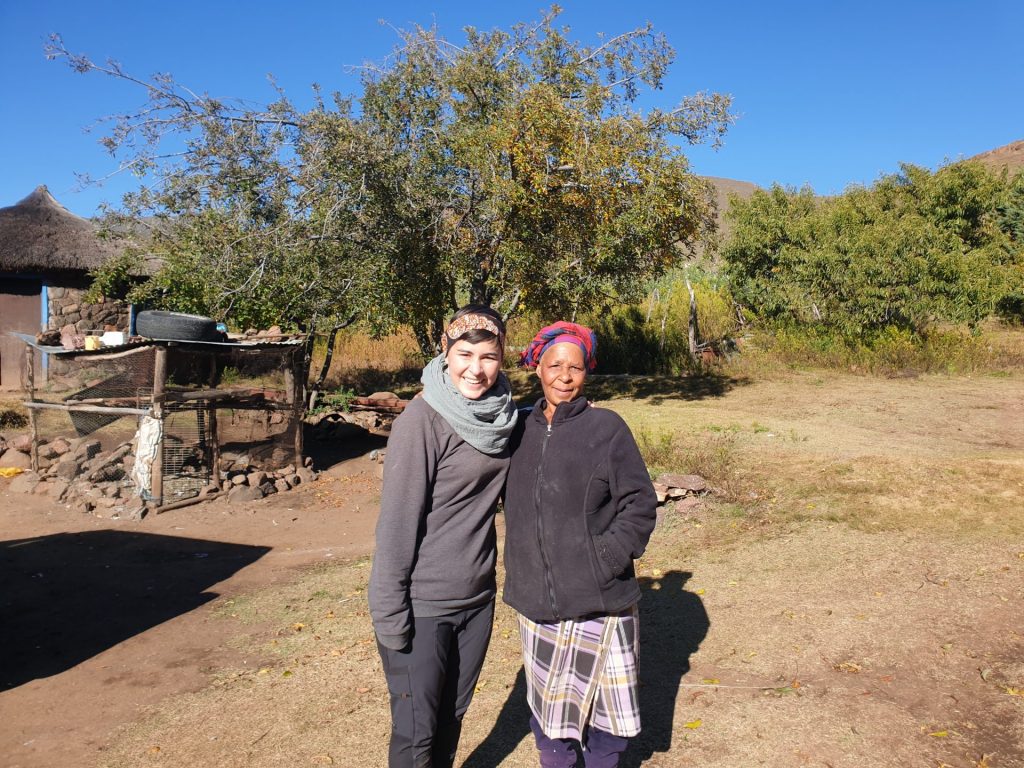

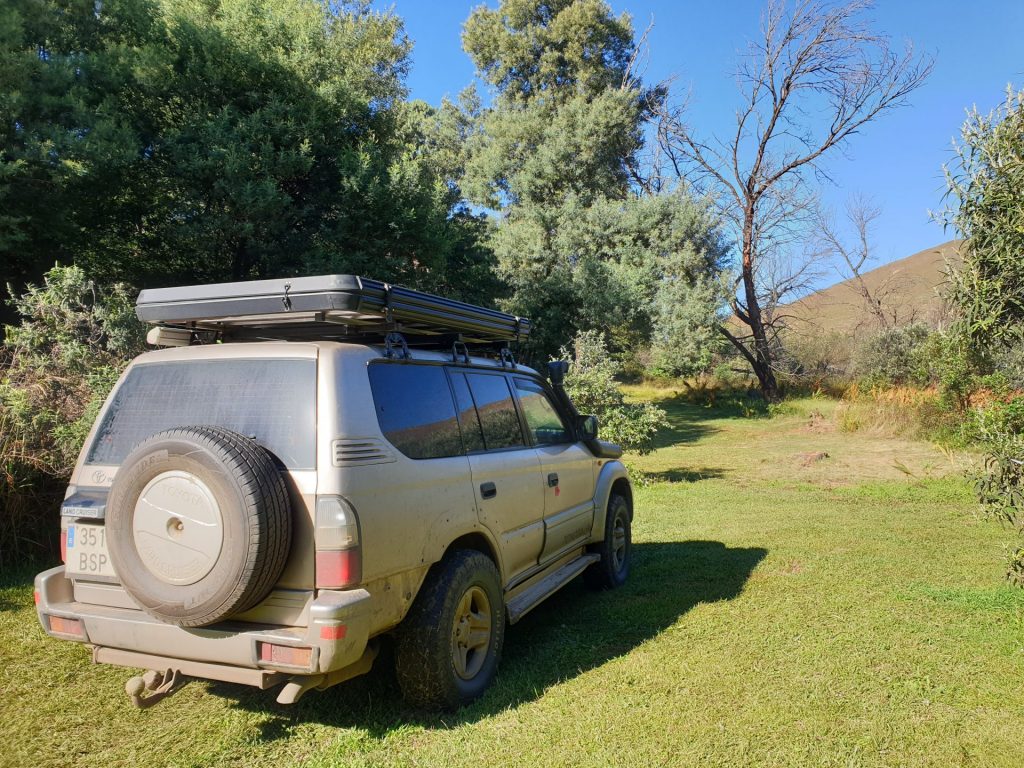
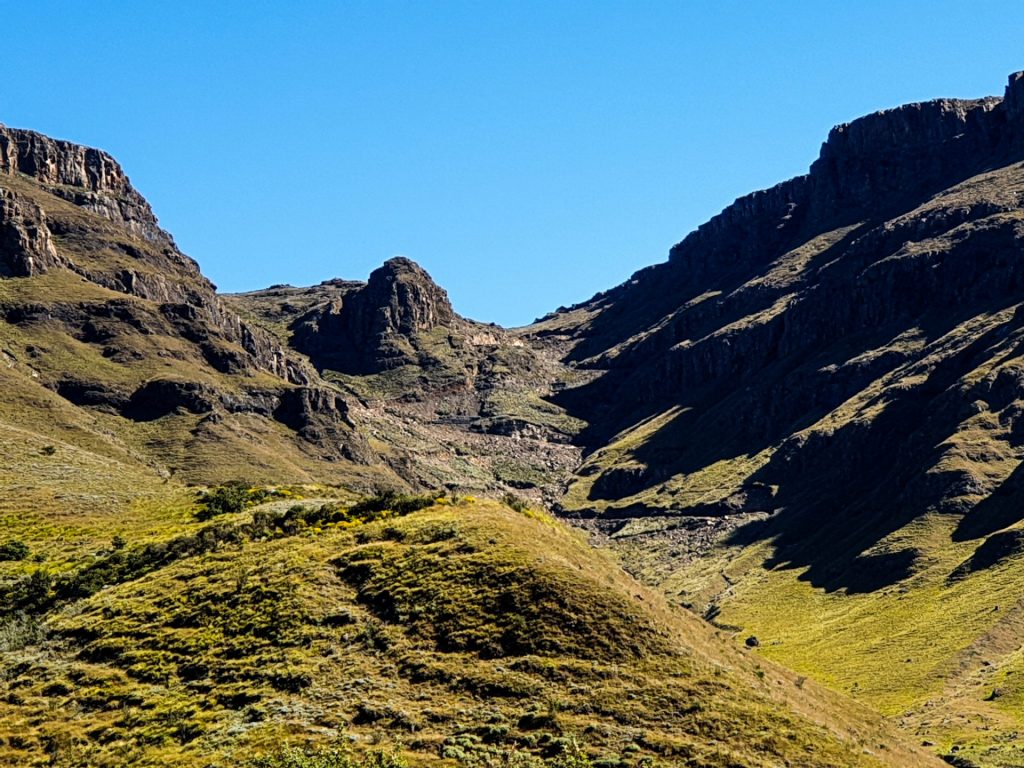
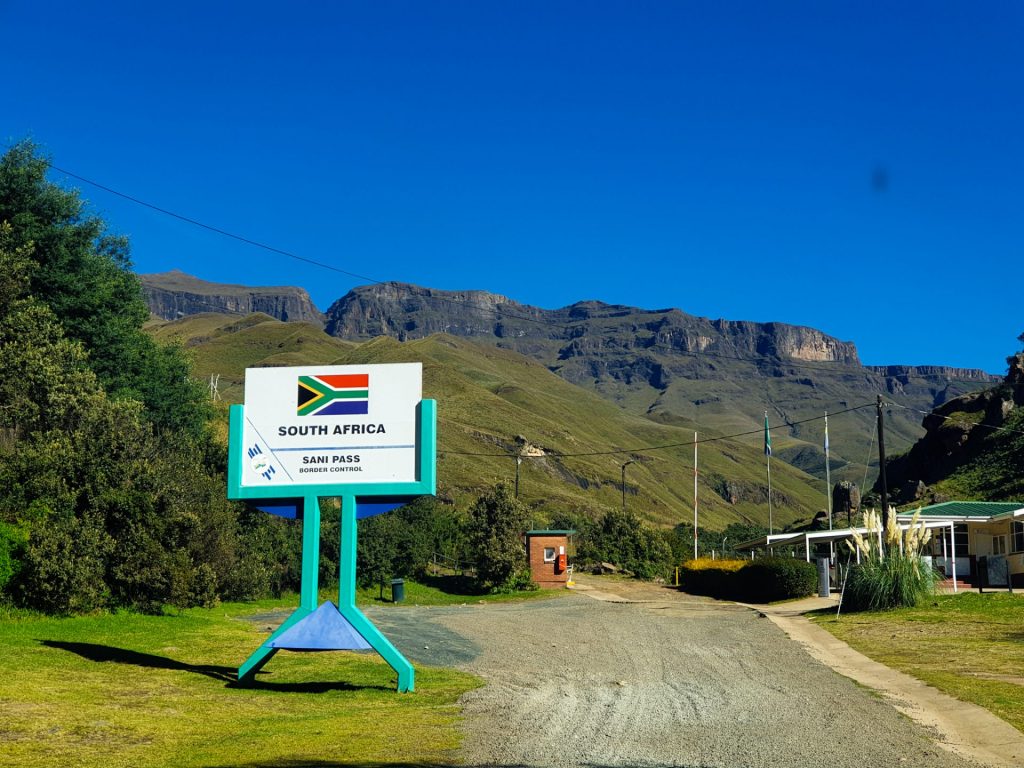


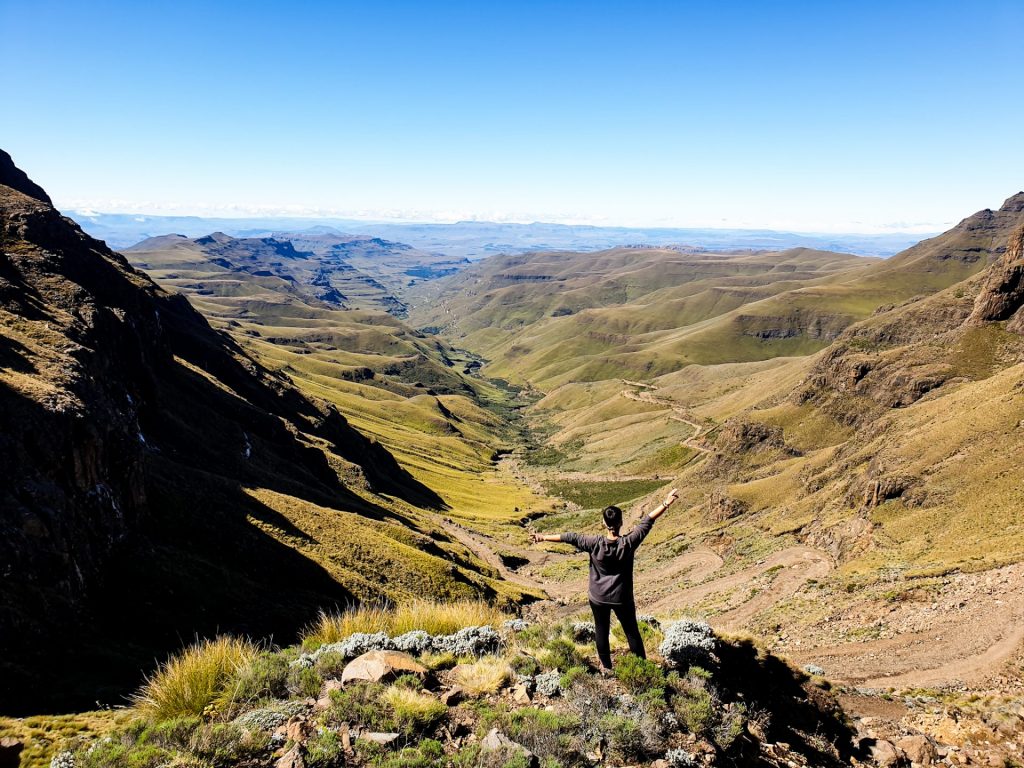
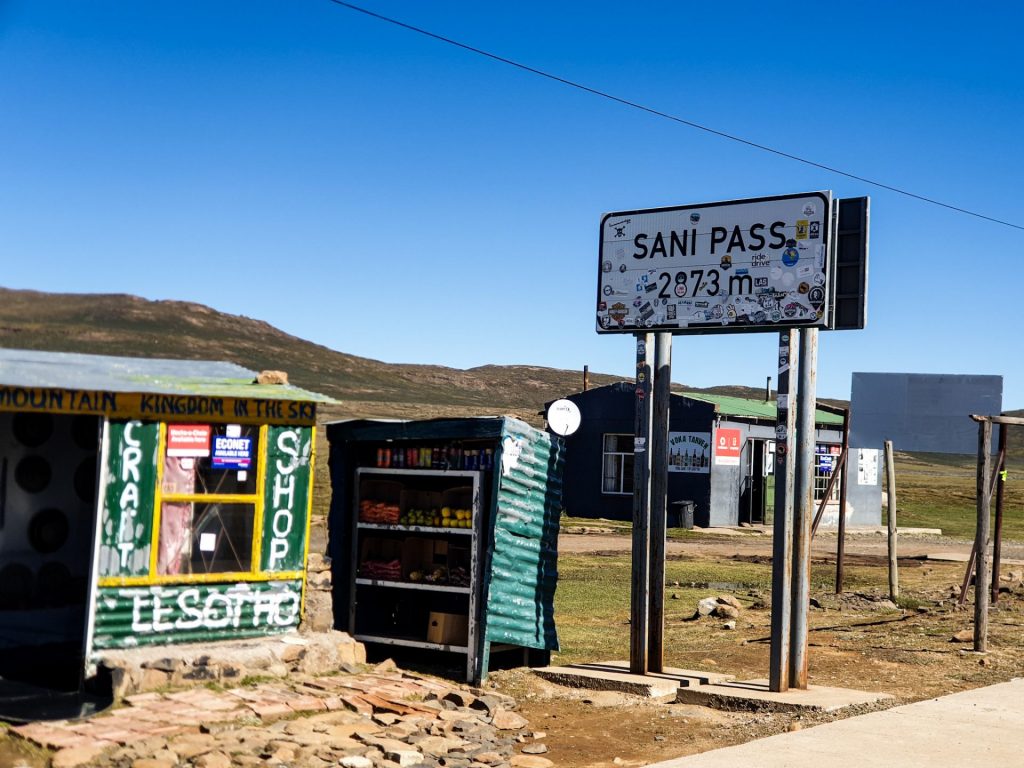
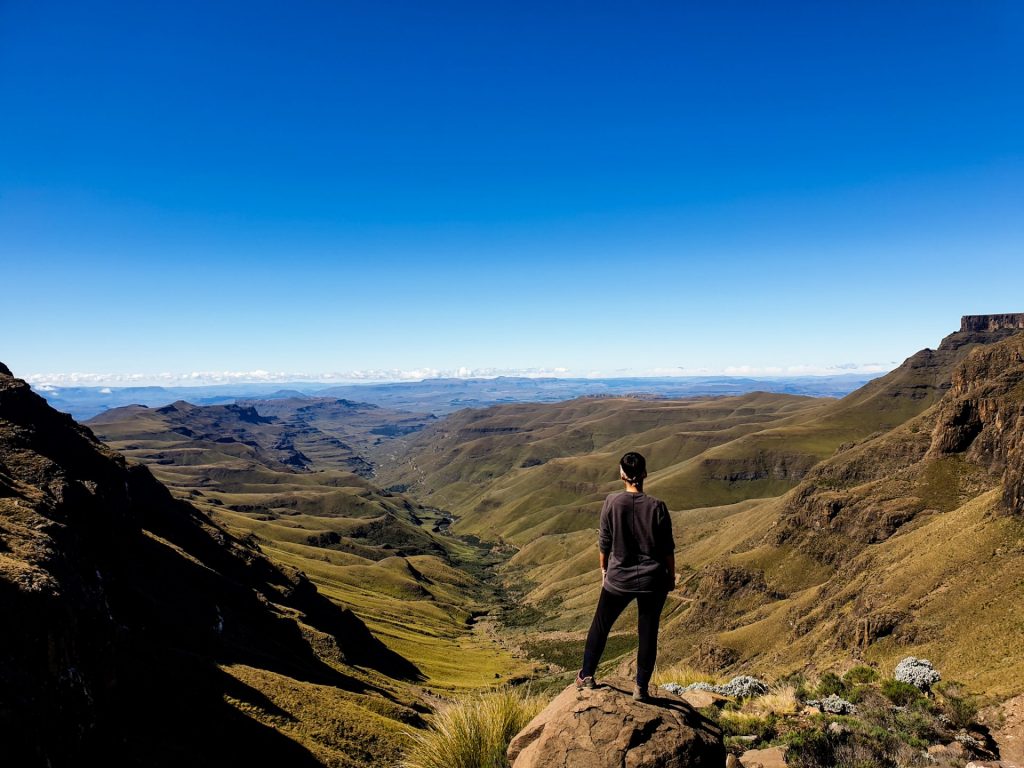
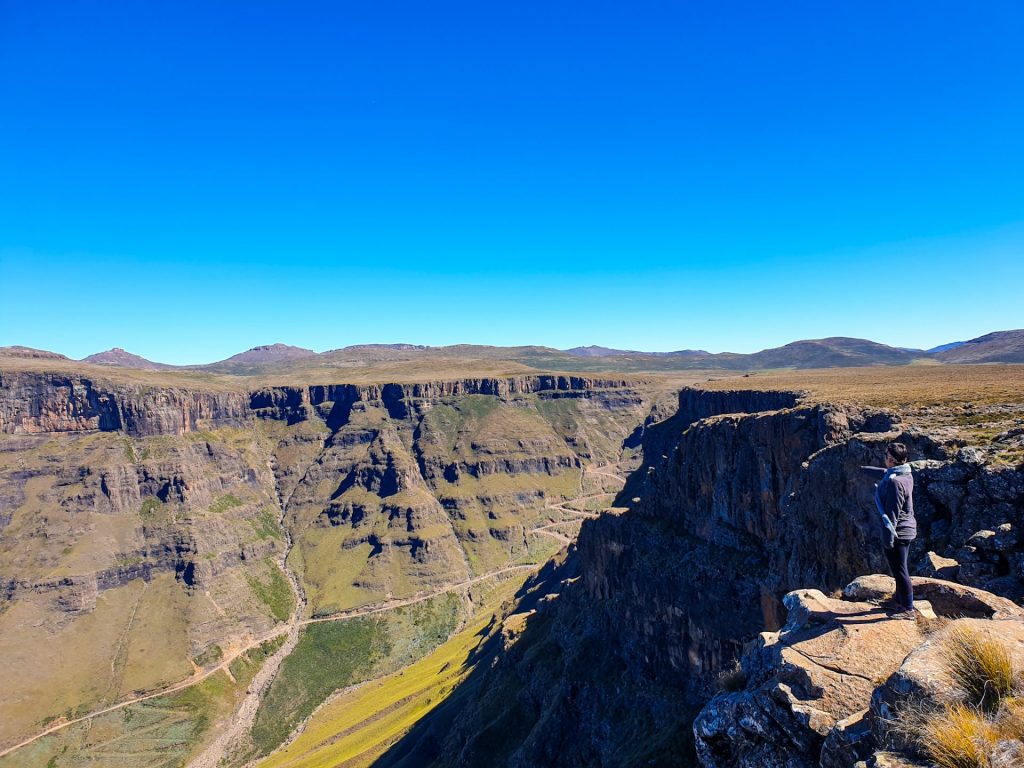

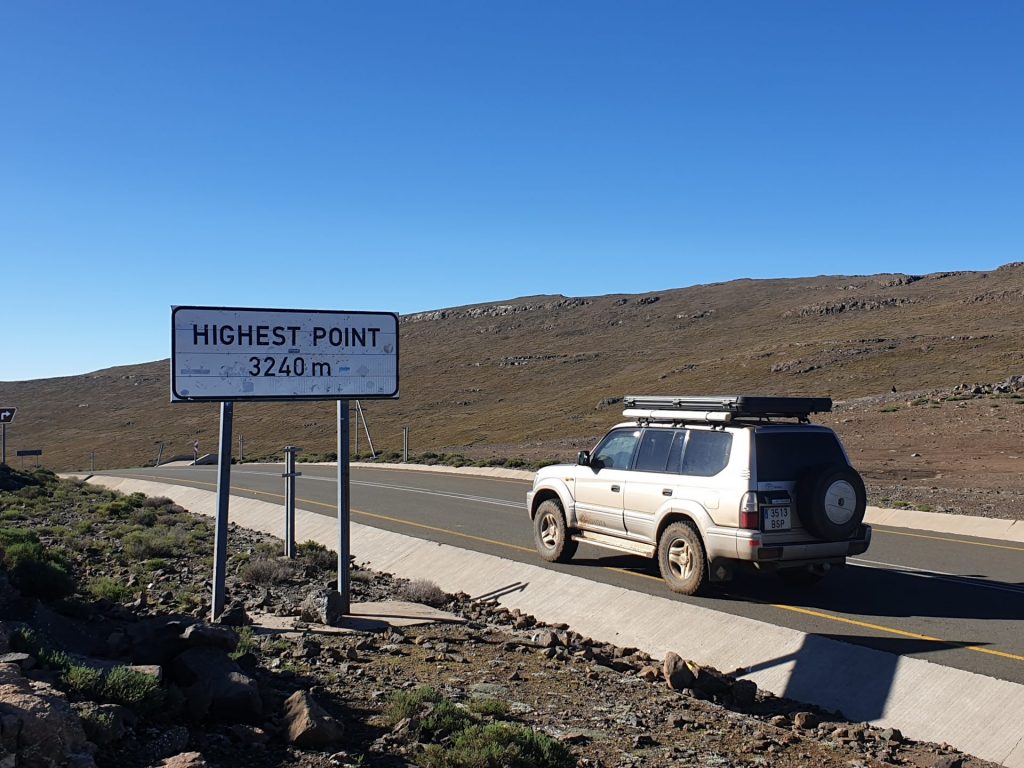


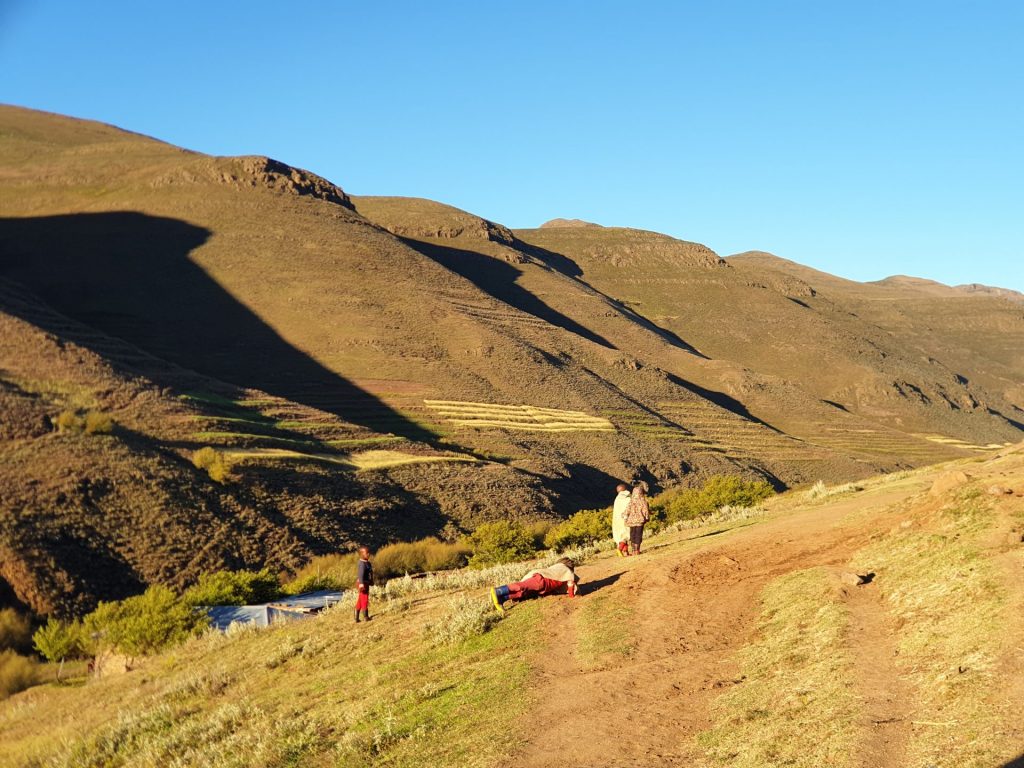
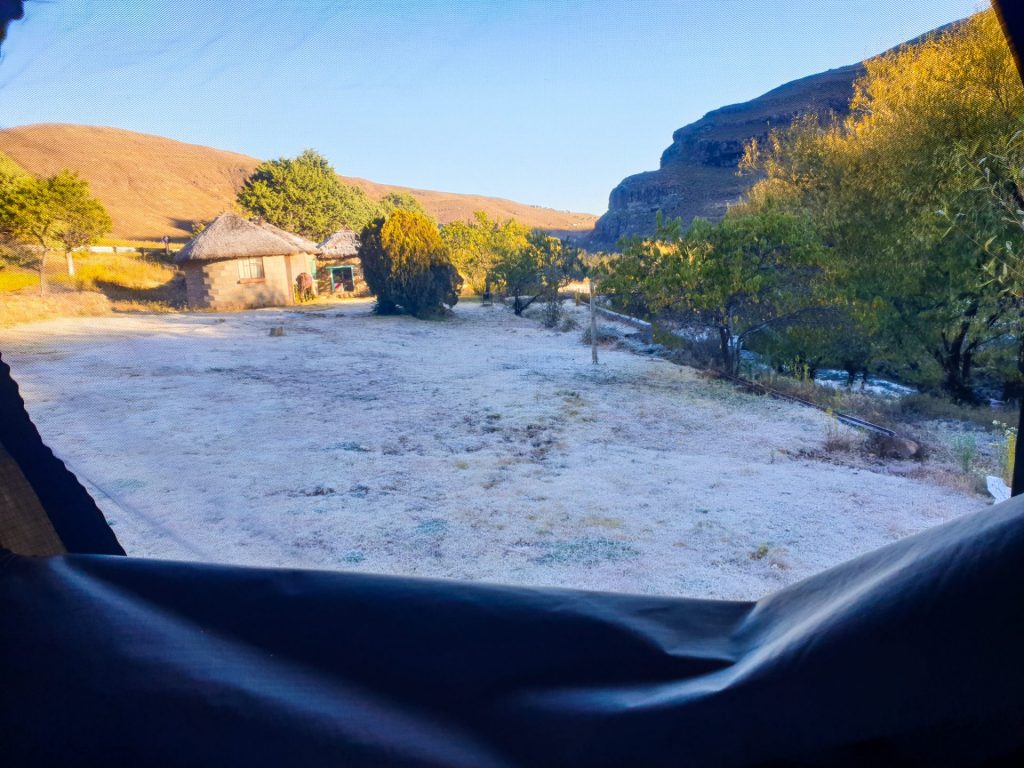





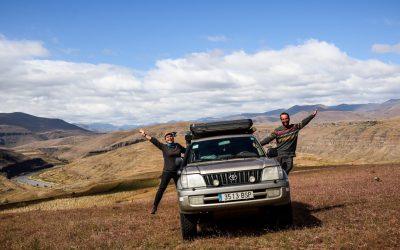
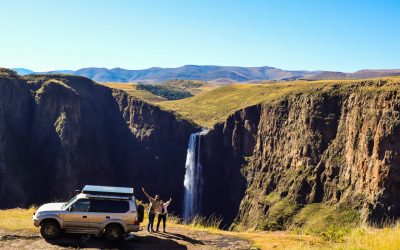
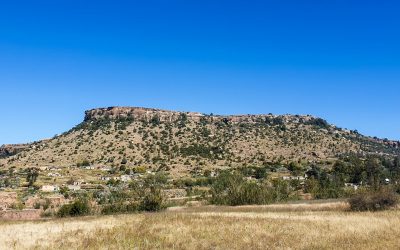

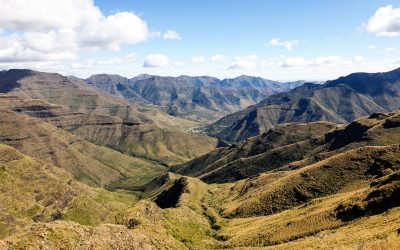

0 Comments